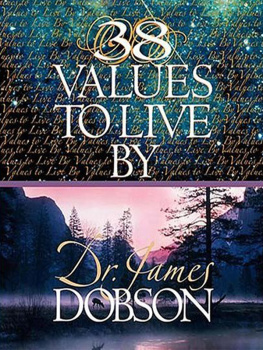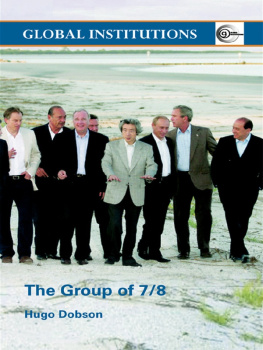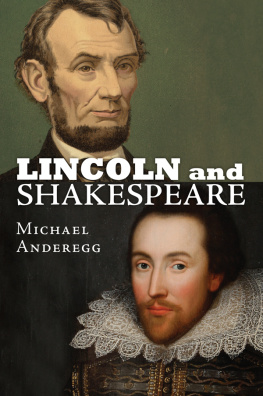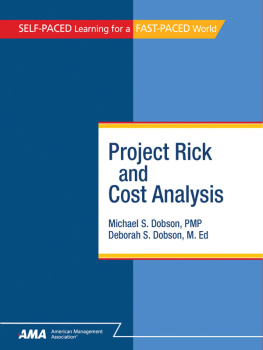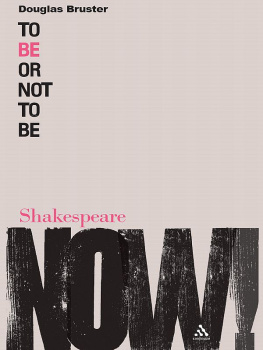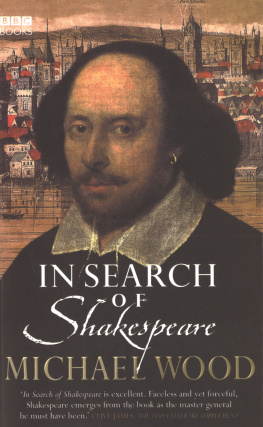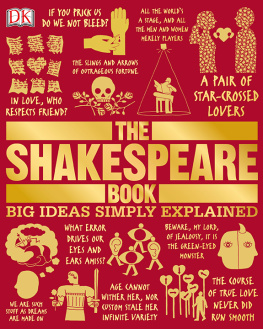Michael Dobson - Shakespeare: A Playgoers & Readers Guide
Here you can read online Michael Dobson - Shakespeare: A Playgoers & Readers Guide full text of the book (entire story) in english for free. Download pdf and epub, get meaning, cover and reviews about this ebook. year: 2016, publisher: OUP Oxford, genre: Non-fiction. Description of the work, (preface) as well as reviews are available. Best literature library LitArk.com created for fans of good reading and offers a wide selection of genres:
Romance novel
Science fiction
Adventure
Detective
Science
History
Home and family
Prose
Art
Politics
Computer
Non-fiction
Religion
Business
Children
Humor
Choose a favorite category and find really read worthwhile books. Enjoy immersion in the world of imagination, feel the emotions of the characters or learn something new for yourself, make an fascinating discovery.
- Book:Shakespeare: A Playgoers & Readers Guide
- Author:
- Publisher:OUP Oxford
- Genre:
- Year:2016
- Rating:3 / 5
- Favourites:Add to favourites
- Your mark:
- 60
- 1
- 2
- 3
- 4
- 5
Shakespeare: A Playgoers & Readers Guide: summary, description and annotation
We offer to read an annotation, description, summary or preface (depends on what the author of the book "Shakespeare: A Playgoers & Readers Guide" wrote himself). If you haven't found the necessary information about the book — write in the comments, we will try to find it.
Shakespeare: A Playgoers & Readers Guide — read online for free the complete book (whole text) full work
Below is the text of the book, divided by pages. System saving the place of the last page read, allows you to conveniently read the book "Shakespeare: A Playgoers & Readers Guide" online for free, without having to search again every time where you left off. Put a bookmark, and you can go to the page where you finished reading at any time.
Font size:
Interval:
Bookmark:

A Playgoers and Readers Guide
Michael Dobson is Professor of Shakespeare Studies and Director of the Shakespeare Institute, University of Birmingham, a member of the Council of the Shakespeare Birthplace Trust, and an honorary governor of the Royal Shakespeare Company: his previous appointments include posts at Oxford, Harvard, the University of Illinois at Chicago and the University of London, and he has held fellowships and visiting appointments in California, Sweden and China. His publications include The Making of the National Poet (1992), Englands Elizabeth (with Nicola Watson, 2002), Performing Shakespeares Tragedies Today (2006), and Shakespeare and Amateur Performance (2011).
Sir Stanley Wells, CBE, FRSL, is Honorary President, Life Trustee, and former Chairman of the Shakespeare Birthplace Trust. He was Professor of Shakespeare Studies and Director of the Shakespeare Institute, University of Birmingham, from 19881997, and is now Emeritus Professor. He is an Honorary Emeritus Governor of the Royal Shakespeare Company. He has been General Editor of the Oxford Shakespeare since 1978 and is General Editor of the Penguin Shakespeare. One of the most distinguished Shakespearian scholars currently working, his publications include The Oxford Dictionary of Shakespeare (1998), Shakespeare: The Poet and his Plays (2001), The Oxford Shakespeare: King Lear (2001), Shakespeare For All Time (2002), Shakespeare & Co (2006), Shakespeare, Sex, and Love (2010), Great Shakespeare Actors (2015), and William Shakespeare: A Very Short Introduction (2015).
Edited by
MICHAEL DOBSON and STANLEY WELLS
Revising Editorial Assistant
GEORGINA LUCAS


Great Clarendon Street, Oxford, OX 2 6 DP , United Kingdom
Oxford University Press is a department of the University of Oxford. It furthers the Universitys objective of excellence in research, scholarship, and education by publishing worldwide. Oxford is a registered trade mark of Oxford University Press in the UK and in certain other countries
Oxford University Press 2020
The moral rights of the authors have been asserted
Database right Oxford University Press (maker)
First published 2020
Articles previously published as part of The Oxford Companion to Shakespeare:
Published in hardback 2001
Published online 2003
First issued as an OUP paperback 2005
Reprinted with corrections 2008
Updated online 2012
Second edition published 2015
Impression: 1
All rights reserved. No part of this publication may be reproduced, stored in a retrieval system, or transmitted, in any form or by any means, without the prior permission in writing of Oxford University Press, or as expressly permitted by law, by licence or under terms agreed with the appropriate reprographics rights organization. Enquiries concerning reproduction outside the scope of the above should be sent to the Rights Department, Oxford University Press, at the address above
You must not circulate this work in any other form and you must impose this same condition on any acquirer
Published in the United States of America by Oxford University Press
198 Madison Avenue, New York, NY 10016, United States of America
British Library Cataloguing in Publication Data
Data available
Library of Congress Control Number: 2020943921
ISBN 9780198855231
ebook ISBN 9780192597472
Printed and bound in Great Britain by Clays Ltd, Elcograf S.p.A.
Links to third party websites are provided by Oxford in good faith and for information only. Oxford disclaims any responsibility for the materials contained in any third party website referenced in this work.
This book is intended as an aid to the enjoyment of the plays and poems of William Shakespeare (15641616), long regarded as the most important writer in English, as the most versatile and accomplished playwright of the European Renaissance, and as a cornerstone of modern world drama. After a short biography of Shakespeare, the books contents are organized alphabetically. Entries consist of descriptions of the plays and poems of Shakespeare, supplying information about when each was written and what sort of information we can deduce from its early texts. For the plays, we also supply a character list, a summary of what happens in each scene, a short account of the continuing discussion the play has occasioned among critics and admirers over the last four centuries, a short account of major trends in its performance history (mainly limited, for reasons of space, to its performance history in Britain), and a short list of extant film and television versions. We have appended a family tree of characters in the English history plays; a very short list of further accessible reading on different aspects of Shakespeare and his works; and a chronology listing events in Shakespeares life and career and some milestones in the dissemination, performance, and interpretation of his work down to the early twenty-first century.
The entries in this book have been adapted and updated from entries in our Oxford Companion to Shakespeare, to which readers wanting a large and more comprehensive encyclopedia of Shakespearean knowledge should immediately turn. Like that book, this one takes its line and scene references from the second (2005) edition of the Complete Oxford Shakespeare (edited by Stanley Wells, Gary Taylor, William Montgomery, and John Jowett), and its account of the canon and chronology of Shakespeares works is essentially that explained in depth in Gary Taylor and Stanley Wellss William Shakespeare: A Textual Companion (1987). It may be useful here to explain a few terms used about the early printing of the plays in several of our play entries, terms which arent elsewhere defined in this Guide:
Folioa large book made of sheets of paper which have been folded only once. The First Folioabbreviated by specialists to F1is the collected edition of Shakespeares plays assembled by his fellow actors John Heminge and Henry Condell after Shakespeares death and publishedas Mr William Shakespeares Comedies, Histories, and Tragediesin 1623. This volume provides the only authoritative texts for about half of Shakespeares plays, on which all subsequent reprintings are based.
Foul papersan Elizabethan term for a playwrights rough draft manuscript. The theatre company would transcribe this manuscript to produce an official book, from which individual actors would then have their own lines transcribed by a scribe and which would be used to monitor and supervise performances in the playhouse. It is thought by many scholars (though not all) that some of Shakespeares foul papers were released to printers after they had been transcribed. This hypothesis would explain several features of some early texts of the plays, among them open-ended, provisionallooking stage directions which are vague about how many characters should enter or leave, idiosyncratic spellings (Shakespeare appears to have liked scilence for silence, for instance), false starts, and an inconsistency with speech headings (those for Lady Capulet include Capulets Wife, Wife, Old Lady, Lady, and Mother, suggesting that Shakespeare sometimes conceived of characters primarily by their relation to others onstage).
Font size:
Interval:
Bookmark:
Similar books «Shakespeare: A Playgoers & Readers Guide»
Look at similar books to Shakespeare: A Playgoers & Readers Guide. We have selected literature similar in name and meaning in the hope of providing readers with more options to find new, interesting, not yet read works.
Discussion, reviews of the book Shakespeare: A Playgoers & Readers Guide and just readers' own opinions. Leave your comments, write what you think about the work, its meaning or the main characters. Specify what exactly you liked and what you didn't like, and why you think so.


